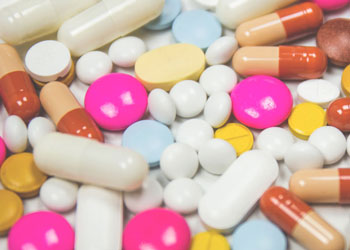When someone mentions a Skittles party, what do you think of? If you haven’t actually participated in a Skittles party, you’re probably imagining a bunch of bowls filled with little rainbow hard candies and maybe some young teens in brightly colored outfits. Seems innocent enough. So you’re probably not concerned when you overhear your teenager talking to her friend about a Skittles party they’re going to later that night. You might even advise her to dress warm and have fun. It might come as a surprise then when you realize that you’re actually seeing her off to a drug party.

What Exactly is a Skittles Party?
A Skittles party is essentially a gathering of adolescents who all bring and pool a supply of prescription drugs into a bowl. Each person is then able to sample whatever drugs they choose out of the bowl, many times without even knowing (or caring) what the drug is. This sample bowl can contain Adderall, Xanax, painkillers, and many other prescription drugs.
Skittles Drugs*:
Stimulants: Ritalin, Adderall, Concerta
Benzos: Xanax, Librium, Halcion
Opiates: Vicodin, Norco, Oxycontin

*This is just an example of the drugs that can be pooled at a Skittles party. However, the exact drugs at each “party” depend on what prescriptions each participant has access to.
Dangers of a Skittles Party
The obvious danger of a Skittles party is that teens are abusing these drugs. It’s highly likely that none of the teenagers at the “party” were even prescribed the drugs they bring. The prescription drugs could be leftover and sitting in a medicine cabinet at home or stolen from a sibling or parent who actually needed the prescription. Drug abuse includes any time a drug is used without any need for it.
Abusing multiple drugs at the same time is significantly more dangerous than misusing one drug. Unfortunately, this is the norm at a Skittles party because so many different drugs are pooled. There are many prescription drugs that shouldn’t be taken with anything else. For example, mixing stimulants with decongestants can cause a huge spike in blood pressure as well as an irregular heartbeat. Mixing benzodiazepines (“benzos”) with opiates has been known to increase the risk of overdose. Other types of drugs shouldn’t be taken with more drugs of the same type. For example, taking too many benzos at one time can depress heart rate to dangerously low levels.
Furthermore, abuse of these drugs can lead to other, more threatening drugs. For example, opiate abuse can actually lead to heroin abuse. However, even if these teens don’t graduate to other street drugs, all of the Skittles drugs have addictive qualities and should not be taken lightly.
Robo-Tripping
“Skittles” isn’t the only code word that has become popular in youth culture. Some teenagers partake in abusing cough syrup to reach a high. This is known as “robo-tripping”, named after Robitussin. Cough suppressants that contain dextromethorphan (DXM) can produce a feeling of euphoria as well as a hallucinogenic high. Robo-tripping is common among teens because the drugs – and therefore the high – are easily accessible, as most household medicine cabinets contain these cough syrups.
Household cough suppressants that contain DXM and can be used for robo-tripping include: Robitussin, Dimetapp DM, Nyquil, Delsym, Theraflu, and Vicks Formula 44.
Negative Side Effects:
- Nausea and vomiting
- Hypothermia
- Seizures
- Increased blood pressure
- Cerebral hemorrhaging
- Death
Aside from the negative side effects specific to each drug, the “skittles drugs” and dextromethorphan are all addictive. However, a teenager who is participating in these dangerous activities probably never thinks about addiction. I mean, they’re likening these drugs to rainbow candies after all.
Virtually no one struggling with addiction ever intended to become addicted. If you suspect that your child is struggling with addiction issues, feel free to reach out to us at 855-737-7363. New Start Detox and Recovery is here to help.

